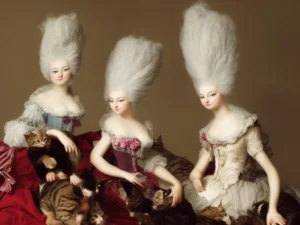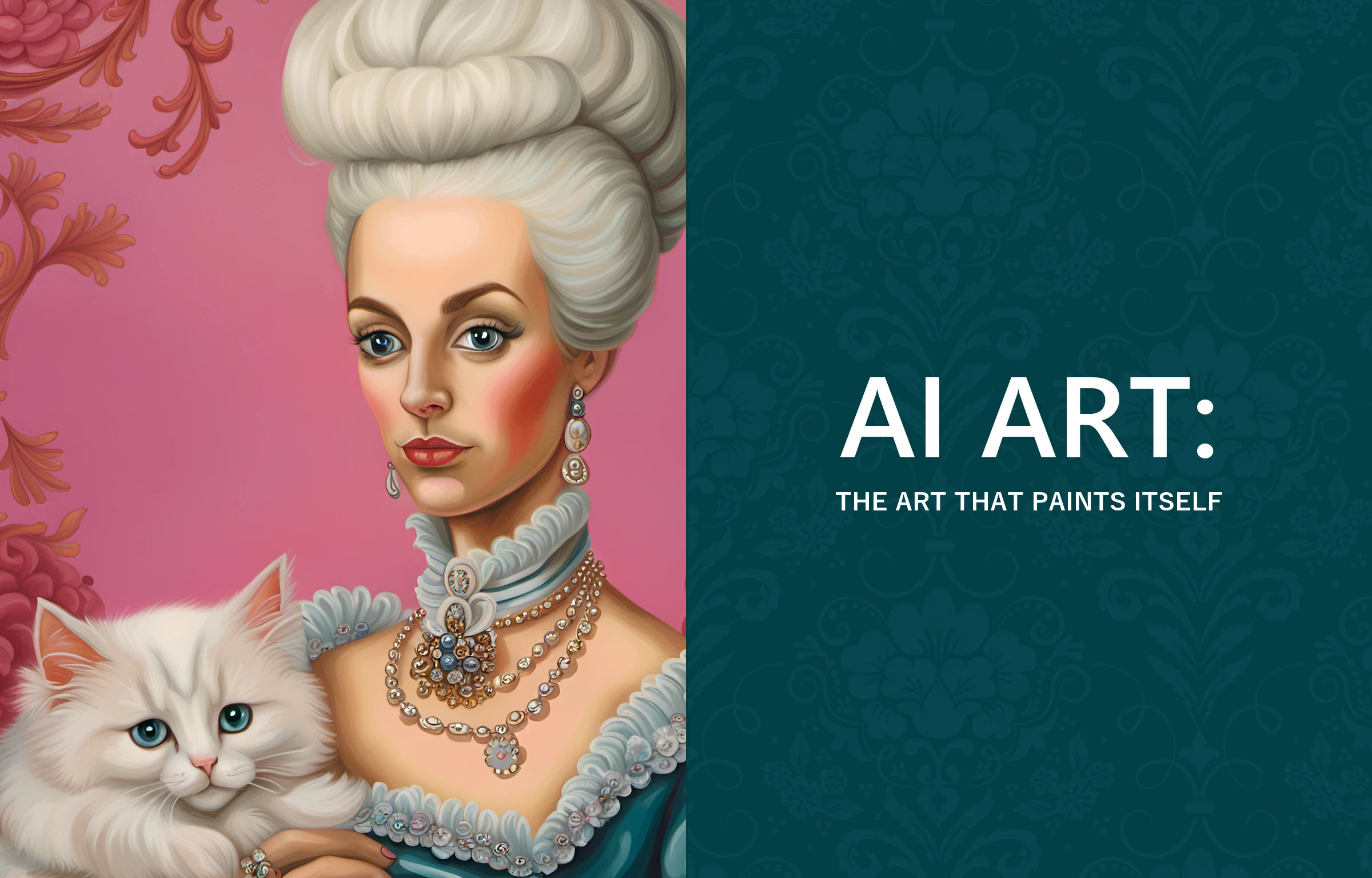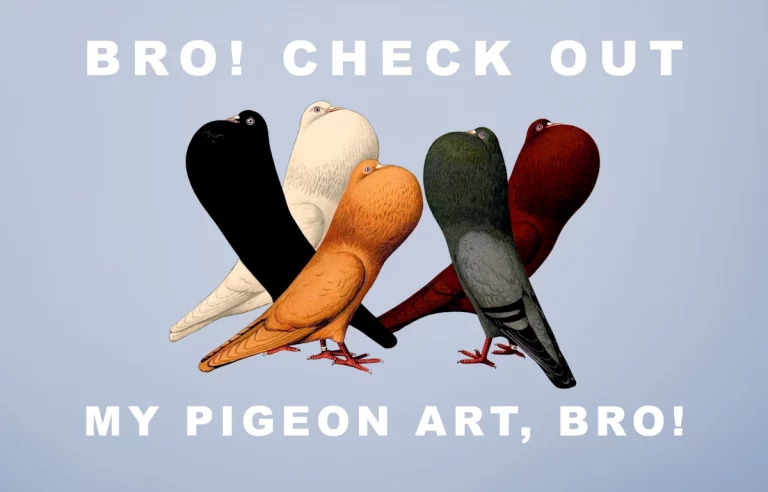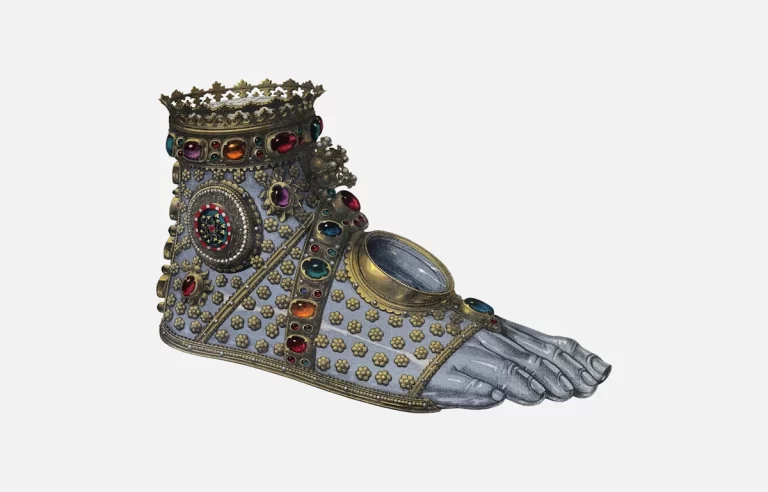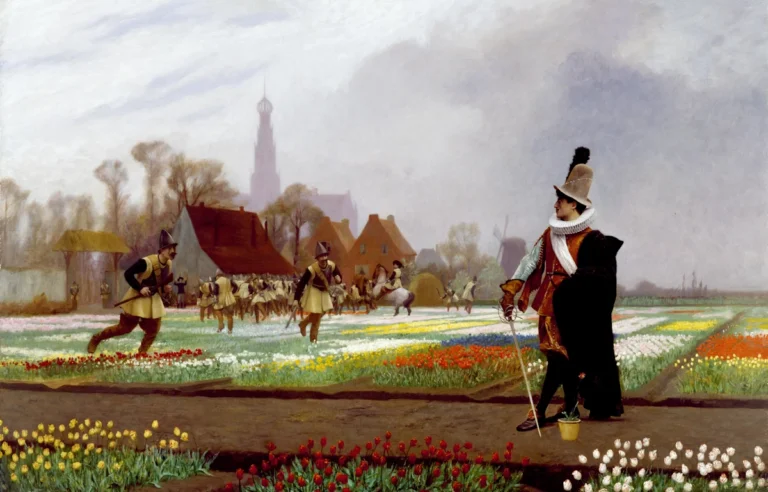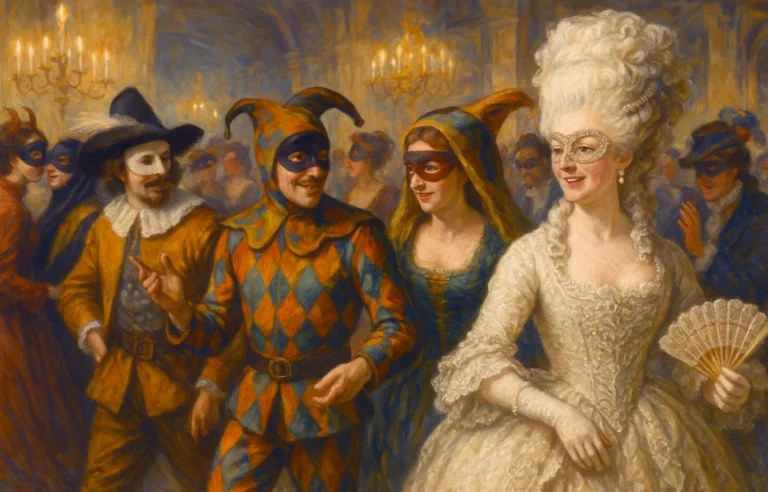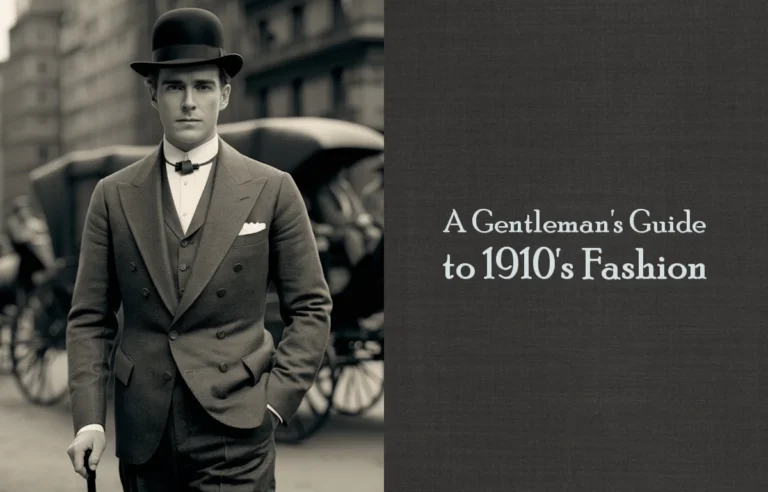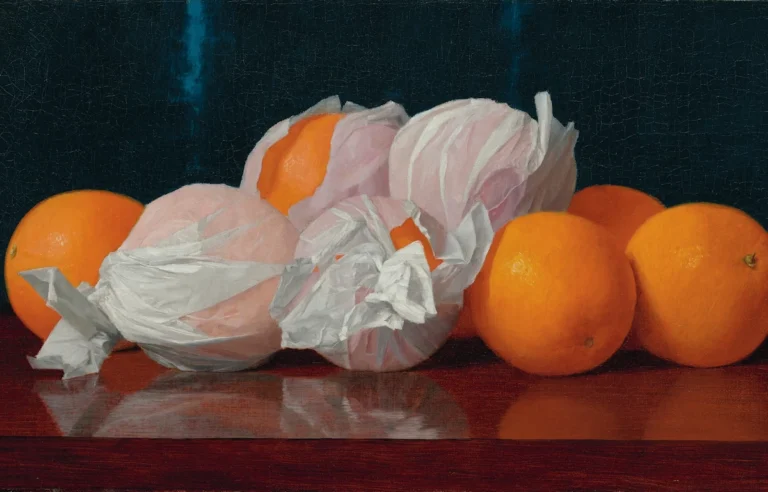AI Art: The Art That Paints Itself
Imagine you’re scrolling through the internet, and you come across a stunning picture of a woman styled like Marie Antoinette, holding the fluffiest, most adorable kitten you’ve ever seen. But here’s the twist: this image isn’t in a museum or created by a human artist at all. It was made by a computer using artificial intelligence (AI) after someone typed in a few simple words: “Marie Antoinette holding the fluffiest kitten.”
This isn’t a wild dream or a scene from a futuristic movie—it’s happening right now! With just a bit of text, anyone can create an image that looks like it belongs in an art gallery. One powerful AI tool that can do this is called DreamStudio. It’s free to try, works super fast, and generates pictures that look like real art from different time periods or styles. So, if you want a portrait of Marie Antoinette with rosy cheeks and a kitten, DreamStudio can make it happen.
But AI art isn’t perfect, and it raises some really interesting questions about what art is and what it means to be an artist.
What AI Art Gets Right (and Wrong)
AI art can do a lot of things well, like capturing colors, shadows, and styles that make an image look like it was painted by a famous artist from history. But it also makes some funny mistakes. One thing AI art isn’t great at is drawing hands. If you’ve ever noticed that AI-generated people sometimes have too many fingers or a hand that looks like it’s melting, you’re not alone. The same goes for arms, legs, and even animal limbs. In that dreamy picture of Marie Antoinette, for example, the woman’s arm looks blurry and odd, and the cats—well, they’re kind of a fluffy mess with extra legs and tails!
Even with these mistakes, though, AI-generated images are often so good that you might not notice anything weird at first glance. It makes us wonder: Will we reach a point where we can’t tell if something was made by a human or a computer?
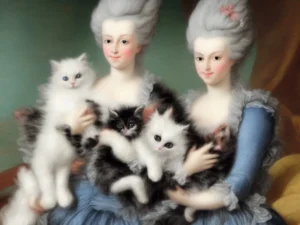
What Does This Mean for Traditional Art?
Art has always been something created by humans. Artists spend years learning how to paint, sculpt, and express emotions through their work. They experiment with color, light, and texture to tell stories and make us feel something. But now, with AI, anyone can create a piece of art in seconds. No need to go to art school or even pick up a paintbrush. All you need is a computer and an idea.
This new technology is exciting, but it also challenges what we think of as art. If a machine can make art, does that mean artists are no longer needed? Or will AI just be another tool for artists to use, like a paintbrush or a camera? These are questions we’re only beginning to explore.
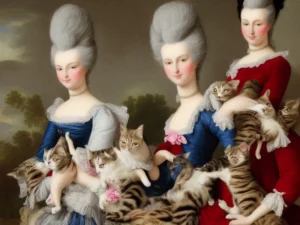
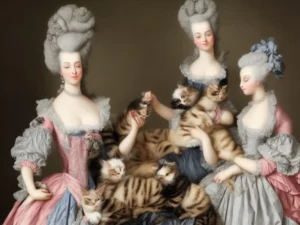
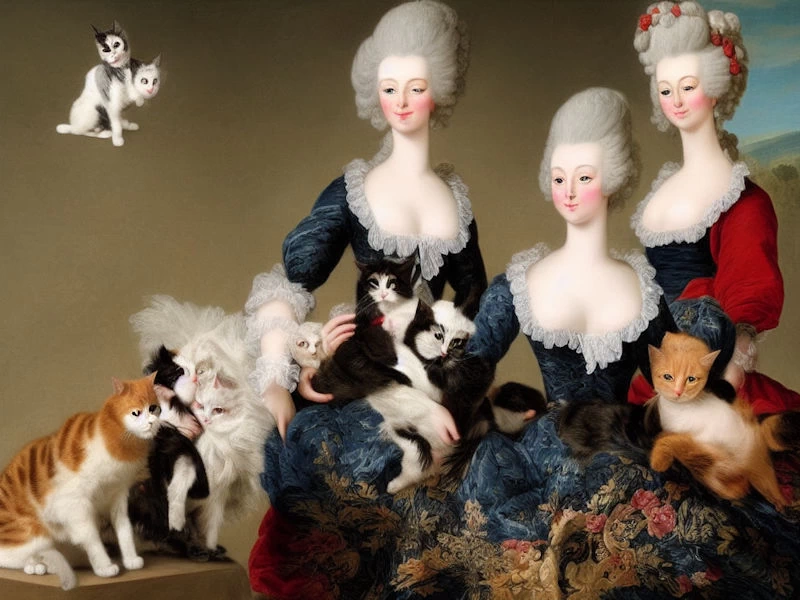
My First Time Using AI Art
When I first tried making AI art with DreamStudio, I started with a simple idea: “Marie Antoinette holding cats.” The AI gave me dozens of pictures, each one different but all connected by that idea. Some of them were really strange—one had cats floating in mid-air, and others showed people with arms or legs in the wrong places. But many of the images were beautiful, and even the mistakes were interesting to look at.
As I kept experimenting, I noticed that the more specific I was with my text prompt, the better the results were. For example, when I typed just “Marie Antoinette and cats,” I ended up with some creepy-looking human-cat hybrids. But when I added more details like “holding the fluffiest kitten,” the AI started making cuter, more normal-looking pictures.
I even tried playing around with different art styles. By typing in “low-brow” (which is an art style that’s quirky and a bit odd), I got pictures that looked like they were made by an artist named Mark Ryden, who’s known for painting dreamy, weird things. The AI was really good at copying this style, which made me wonder: Could we see more “lost” art from famous artists? Maybe a spaceship designed by Leonardo da Vinci or a self-portrait of Frida Kahlo dressed as Morticia Addams? It sounds silly, but with AI, it’s possible!
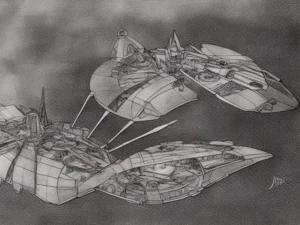
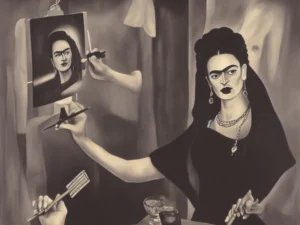
Who Owns AI Art?
There’s another big question that comes with AI art: Who owns it? In the world of traditional art, the person who creates a painting owns the rights to it. They can sell it, make prints of it, or put it in a museum. But when AI creates an image, things get a little confusing. If I type in a prompt, like “Marie Antoinette holding a kitten,” and the AI makes a picture, who owns that picture? Is it me, because I came up with the idea? Or is it the person who made the AI program? Or does nobody own it, and it’s free for anyone to use?
In the United States, a piece of art must be created by a human to be copyrighted. So technically, AI art is in the public domain, meaning anyone can use it without paying for it. This is great for people who want to make art but don’t want to worry about copyright. But it’s tricky for artists who want to protect their work, especially if AI is learning from their art.
What About the Artists?
Speaking of protecting their work, many artists are upset because AI learns by studying millions of pictures from the internet, including ones made by real artists. These artists didn’t give permission for their work to be used, and they don’t get paid when AI creates something new based on their style. Imagine working hard on a painting, only to find out that a computer has copied your style and is giving it away for free. That would feel pretty unfair, right?
This is a major ethical issue in the art world today. Should AI companies pay artists when their work is used to train the AI? Should artists have the right to say no to AI using their art? These are tough questions that still don’t have clear answers.
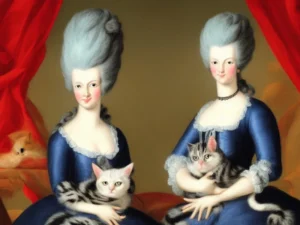
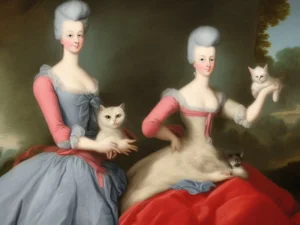
Is AI Art Real Art?
One of the things that makes traditional art so special is that it comes from the heart and mind of a real person. When we look at a painting by Vincent van Gogh, we’re not just seeing pretty colors on a canvas—we’re seeing a piece of van Gogh’s life, his struggles, and his emotions. We feel connected to him because we know he poured himself into his work.
AI, on the other hand, doesn’t have feelings. It doesn’t know what it’s like to be sad or happy, and it doesn’t care about the art it’s making. It’s just following instructions. So, even though AI art can look beautiful, it’s missing that human touch, that emotional connection. Some people believe that this means AI art can never be as meaningful as art made by a person.
But others see AI art as a new way to create and express ideas. They think that AI is just another tool, like a paintbrush or a camera. After all, not every piece of traditional art is full of deep emotions. Sometimes, it’s just about making something that looks cool or interesting. And with AI, we can make all sorts of new and exciting things that we never could before.
The Future of AI Art
So, what does the future hold for AI art? It’s hard to say for sure, but one thing is certain: AI is here to stay, and it’s going to keep changing the way we think about art. We might see more artists using AI to help them come up with ideas or create new styles. Some people even believe that AI could help artists get past creative blocks when they’re stuck.
But there are also concerns. As AI gets better and better, will we still need human artists? Will people care as much about art if a computer can make it in seconds? Or will AI art remain just one piece of the larger art world, coexisting with traditional art?
One exciting possibility is the idea of human artists working together with AI. Instead of seeing AI as a threat, some artists are using it as a partner in the creative process. They might start with an AI-generated image and then tweak it, adding their own personal touch. This kind of collaboration could lead to entirely new forms of art that we haven’t even imagined yet.
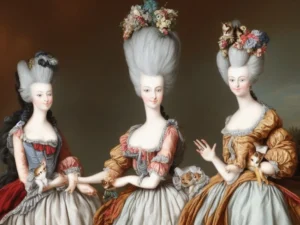
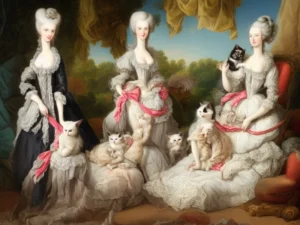
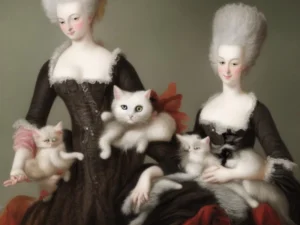
Conclusion: A New Chapter in Art History
In the end, AI art is opening up a whole new chapter in the history of creativity. It’s challenging the way we think about art and making us ask big questions about what it means to be creative. Whether you’re excited by the possibilities or a little nervous about the future, one thing’s for sure: AI is changing the art world in ways we couldn’t have imagined just a few years ago.
So why not give it a try? Grab your computer, type in a fun prompt like “Marie Antoinette holding the fluffiest kitten,” and see what kind of art you can create. Who knows? You might just discover something amazing. And even if it’s not perfect, it’ll still be a glimpse into the future of art—where humans and machines create together.
